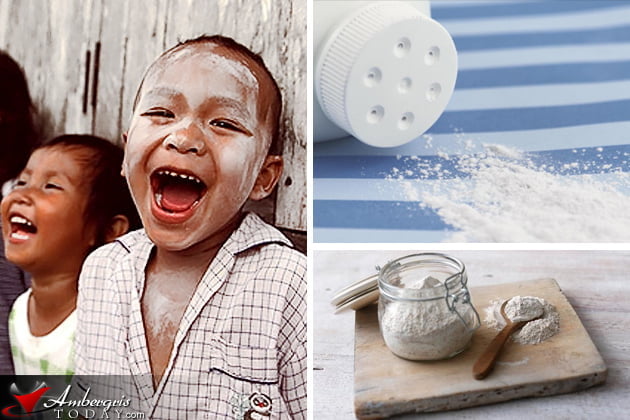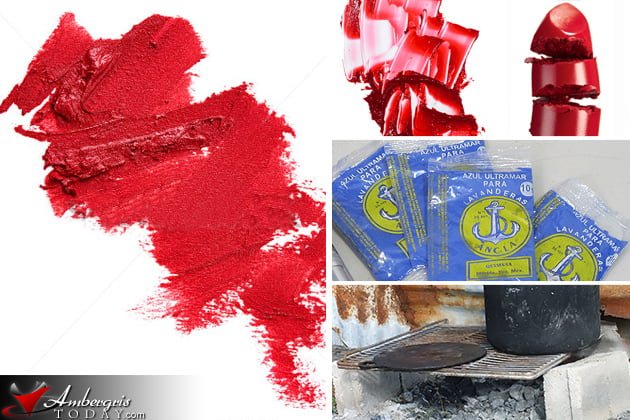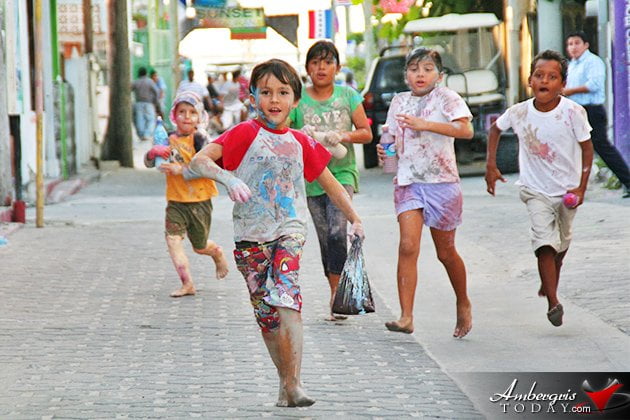By Angel Nuñez
“Oh my God, this isn’t fun!” exclaimed a lady coming from Punta Gorda in the Toledo District as she experienced her first day of Carnabal in San Pedro. She had been painted from head to waist with a mixture of paints which included both water and oil paints and which looked like puke from a green monster. A couple of U.S. tourists looked terrorized as waded their way through groups of people on the streets of San Pedro. Some were enjoying a dance group of comparsas while others were simply looking about in fear as if something terrible was about to happen. “Honey, try to look angry,” said one tourist to another, “because if those savages ever suspect that you are having fun, they will ambush you and attack.”
The scenes on the streets of San Pedro were not pretty and certainly not friendly. It did not look like a cultural tradition that they had heard so much. It looked to them more like a rebellion going on with the attackers looking for new victims. Those who had been painted with paints of all different colors were unrecognizable. You could barely see their eyes and their mouths and teeth were recognizable only when they smiled and that they seemed to be doing a lot as if enjoying their massacre.

To tell the truth the streets of San Pedro have not always been this crazy during Carnabal. For many decades perhaps for some sixty years or more (twenty five years ago) Carnabal was indeed a fun-filled tradition. Yes there was painting but there was respect and law and order. During the first day of Carnabal, which was the Sunday before Ash Wednesday, painting was permitted with white powder only. Most people used body powder while others mixed powder with flour.
If a guy met a young lady on the street, he would politely approach her and rub some of the body powder on her face and arms. Of course she offered no resistance; she simply covered her face because she knew they would laugh at her painted face. After being painted with powder, she would remove the excess and continued on with what she was doing. Body painting was done mostly by boys unto girls and vice versa. There were no gangs running about because nobody was trying to escape from anybody. In fact it seemed like girls were inviting to the guys to get some perfumed talc on their faces.

On the second day the color blue and red were acceptable but the rule of thumb was that it had to be easily removable. Blue bleaching detergent was used for the color blue and lip stick for the red. Now on the third day it got a bit uglier as black was permitted. Most people used the soot from the pots and pans that had been in use and still on the “fogon” or fire hearth. The sooth was mixed with water and it really got you black all over. However, one dip into the sea or one bucket of water at the well, and it was off your body instantly. This was Carnabal, soft and tender, colorful and cultural.

But things got a bit too rough as time went on. It was the people of the district towns and villages who came to live in San Pedro that added a different touch to the painting of Carnabal. They did not accept the painting and to retaliate, they sought to revenge. Thus paint was introduced into the painting scenario sometime in the 1970’s. Ever since it has become this war zone that some of our visitors described earlier. Carnabal today has taken a big twist in the structure of painting and the concentration is no longer on the dancing of comparsas, but rather on the painting of people with paints of all sorts, defacing of signs and walls, and leaving an ugly mark of dirty hands on all public and private property. It does not seek to please a young lady as was done twenty five years ago, but rather to disrespect her.

25 Years Ago Books Can Be Purchased At:
-Ambergris Today Online Newspaper -Jose Luis Zapata Photography –Richie’s Stationery -Lala’s Store -Pampered Paws -San Pedro BTB Office -S.P. Town Library -Di Bush, A & R
Contact the Author at: nunez_nest@yahoo.com











